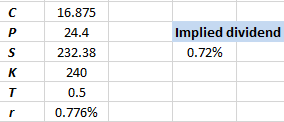Derivatives are financial products whose values are determined by the current price of the underlying asset or portfolio. Weather derivatives are a particular class of financial instruments that individuals or companies can use in support of risk management in relation to unpredictable or adverse weather conditions. While some may see them as an exciting innovation, there is considerable debate about the future of weather derivatives and their suitability to specific situations. The main argument against them is that they are too complex and difficult to understand for the average person. Notably, the valuation of weather derivatives is not trivial as it often requires the modeling of an index whose forecast value can change drastically over the next few hours or days. We note that,
There is no standard model for valuing weather derivatives similar to the Black–Scholes formula for pricing European style equity option and similar derivatives. That is because the underlying asset of the weather derivative is non-tradeable which violates a number of key assumptions of the BS Model. Typically weather derivatives are priced in a number of ways…
[Index modelling] approach requires building a model of the underlying index, i.e. the one upon which the derivative value is determined (for example monthly/seasonal cumulative heating degree days). The simplest way to model the index is just to model the distribution of historical index outcomes. We can adopt parametric or non-parametric distributions. For monthly cooling and heating degree days, assuming a normal distribution is usually warranted. The predictive power of such a model is rather limited. A better result can be obtained by modelling the index generating process on a finer scale. In the case of temperature contracts, a model of the daily average (or min and max) temperature time series can be built. The daily temperature (or rain, snow, wind, etc.) model can be built using common statistical time series models (i.e. ARMA or Fourier transform in the frequency domain) purely based only on the features displayed in the historical time series of the index. A more sophisticated approach is to incorporate some physical intuition/relationships into our statistical models based on spatial and temporal correlation between weather occurring in various parts of the ocean-atmosphere system around the world (for example, we can incorporate the effects of El Niño on temperatures and rainfall). Read more
Despite these difficulties, efforts are being made to price weather derivatives accurately. A recent paper [1] presents a valuation method for pricing an exotic wind power option using Monte Carlo simulations.
Wind power generators face risks derived from fluctuations in market prices and variability in power production, generated by their high dependence on wind speed. These risks could be hedged using weather financial instruments. In this research, we design and price an up-and-in European wind put barrier option using Monte Carlo simulation. Under the existence of a structured weather market, wind producers may purchase an up-and-in European wind barrier put option to hedge wind fluctuations, allowing them to recover their investments and maximise their profits. We use a wind speed index as the underlying index of the barrier option, which captures risk from wind power generation and the Autoregressive Fractionally Integrated Moving Average (ARFIMA) to model the wind speed. This methodology is applied in the Colombian context, an electricity market affected by the El Niño phenomenon. We find that when the El Niño phenomenon occurs, there are incentives for wind generators to sell their energy to the system because their costs, including the put option price, are lower than the power prices. This research aims at encouraging policymakers and governments to promote renewable energy sources and a financial market to trade options to reduce uncertainty in the electrical system due to climate phenomena.
References
[1] Y.E. Rodríguez, M.A. Pérez-Uribe, J. Contreras, Wind Put Barrier Options Pricing Based on the Nordix Index, Energies 2021, 14, 1177.
Originally Published Here: Pricing of Weather Derivatives Using Monte Carlo Simulations


